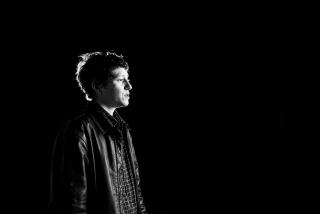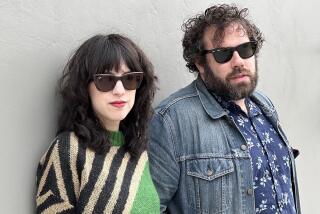The Robert Glasper Experiment’s ‘ArtScience’ stretches the borders of R&B fusion

- Share via
Those searching for a breakout success story in jazz over the last five years would be hard-pressed to top Robert Glasper.
However, for a better read on the trajectory of the Houston-born keyboardist, it may be more instructive to think of “breakout” in terms of what one does to leave a prison. Already a rising star on the strength of albums that could merge an admiration for the beats of J Dilla into a piano trio, Glasper shook up the genre with his band the Experiment and its Grammy-winning 2012 debut “Black Radio,” which rode an open-door policy to the sounds of R&B, rock and hip-hop to something jazz had rarely seen: crossover success with a young audience.
Since then Glasper has guested on various high-profile albums, including Kendrick Lamar’s “To Pimp a Butterfly,” whose liner notes function as a sort of roll call for a like-minded new generation of genre-blind jazz artists. This year, Glasper was also music supervisor for the Miles Davis biopic “Miles Ahead,” (which yielded a better soundtrack than a movie) along with “Everything Is Beautiful,” a companion album that gave Glasper the keys to the Davis archive to craft surprising new compositions.
Now with “ArtScience,” Glasper’s third album with the Experiment (fourth if you count the 2009 split-CD “Double-Booked”) comes closer to merging the pianist’s love for R&B with the experimentation of his live shows.

See the most-read stories in Entertainment this hour »
Opener “This Is Not Fear” serves as a band introduction, but Casey Benjamin’s saxophone sprinting around Glasper’s piano also serves notice of the adventures ahead. At nine minutes, “No One Like You” begins with a clicking rhythm and vocoder vocal that gives way to some show-stopping runs on saxophone and piano, and the twitchy lead single “Find You” rides a driving pulse through proggy synthesizer flourishes and a screaming guitar solo with a drive that’s reminiscent of Queen.
Framed by handclaps and disco strings, “Day to Day” is modern cowbell-funk, and with its heartsick vocals and whistled melody, the flinty “Written in Stone” wouldn’t sound out of place on a better Coldplay record.
Free of the vocal cameos of the Experiment’s more pop-oriented 2013 sequel, “Black Radio 2,” “ArtScience” keeps the focus on the composition twists and instrumental fireworks. Though an occasional fondness for quiet storm R&B weighs down tracks like “Let’s Fall in Love” and the Herbie Hancock funk ballad, “Tell Me a Bedtime Story,” there’s plenty here to show Glasper’s Experiment is still driven toward discovery.
The Robert Glasper Experiment
“ArtScience”
(Blue Note)
Follow me over here @chrisbarton.
More to Read
The biggest entertainment stories
Get our big stories about Hollywood, film, television, music, arts, culture and more right in your inbox as soon as they publish.
You may occasionally receive promotional content from the Los Angeles Times.











